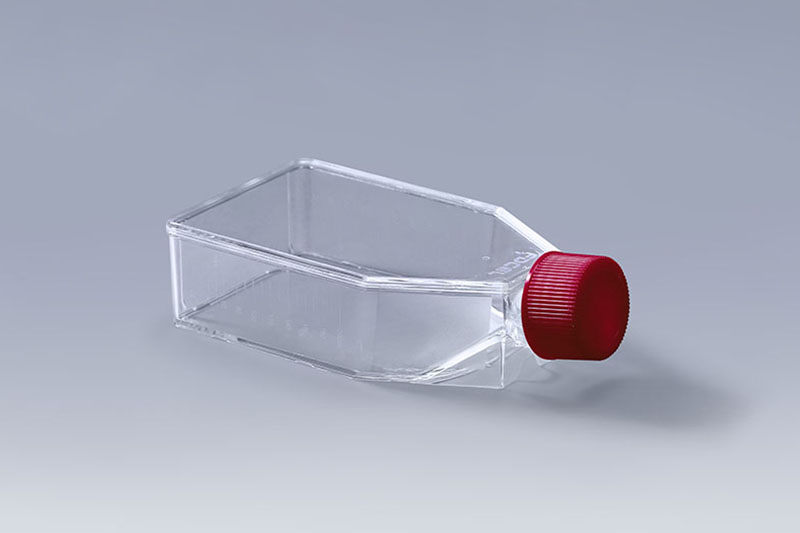Cell culture technology is widely used in the research of cytology, genetics, immunology, experimental medicine, oncology and other disciplines. When culturing cells, there are strict requirements on operating specifications and consumables selection. Cell culture flasks are commonly used disposable consumables, what selection principles should be followed?
1. Production raw materials: Cell culture bottles are generally made of polystyrene as raw material and processed by injection molding. When selecting consumables, consider whether they are USPVI medical-grade raw materials. High-quality raw materials can minimize the risk of leachables.
T75-TC-Treated-Cell-Culture-Flasks
2. Treatment process: This consumable is generally used for the cultivation of adherent cells, but the surface of the material is hydrophobic, and must undergo a special surface treatment process to change its performance to ensure that the cells can be well attached to its surface grow.
3. Quality assurance: High-quality products must be strictly controlled from raw materials, production processes, testing, internal and external packaging, etc. When selecting consumables, we also need to see whether the manufacturer has a complete quality assurance system.
T225-TC-Treated-Cell-Culture-Flasks
4. Cost-effectiveness: After comprehensively examining the above factors, consider the cost-effectiveness of the product. On the premise of ensuring the effect of the product, it can reduce the cost, why not do it?
The above are the four factors that need to be considered when choosing the cell culture flasks. In addition, if the purchase volume is large, it also depends on whether the manufacturer's supply capacity is stable, so as not to affect the later use.
The FAI climbed 5.9 percent year-on-year in the first 11 months of 2018, quickening from the 5.7-percent growth in Jan-Oct, the National Bureau of Statistics (NBS) said Friday in an online statement.
The key indicator of investment, dubbed a major growth driver, hit the bottom in August and has since started to rebound steadily.
In the face of emerging economic challenges home and abroad, China has stepped up efforts to stabilize investment, in particular rolling out measures to motivate private investors and channel funds into infrastructure.
Friday's data showed private investment, accounting for more than 60 percent of the total FAI, expanded by a brisk 8.7 percent.
NBS spokesperson Mao Shengyong said funds into weak economic links registered rapid increases as investment in environmental protection and agriculture jumped 42 percent and 12.5 percent respectively, much faster than the average.
In breakdown, investment in high-tech and equipment manufacturing remained vigorous with 16.1-percent and 11.6-percent increases respectively in the first 11 months. Infrastructure investment gained 3.7 percent, staying flat. Investment in property development rose 9.7 percent, also unchanged.
 English
English




















































